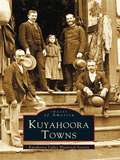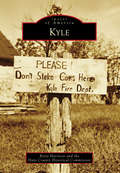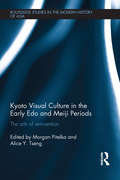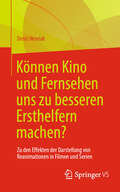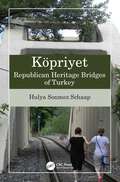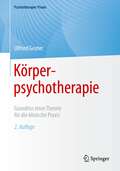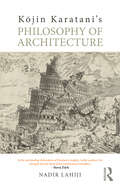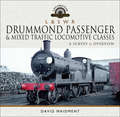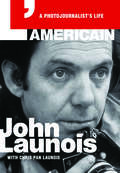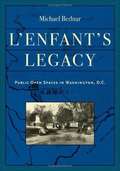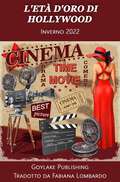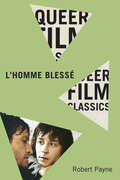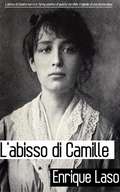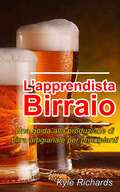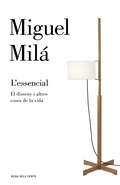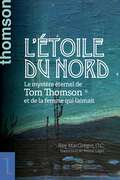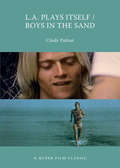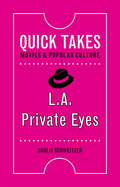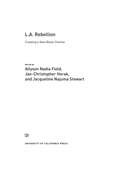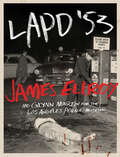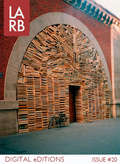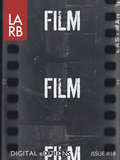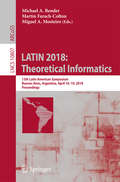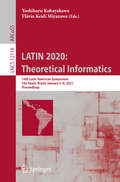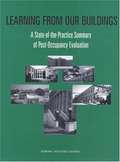- Table View
- List View
Kuyahoora Towns
by Kuyahoora Valley Historical SocietyOnce known as the Kuyahoora River, the West Canada Creek flows from the southern Adirondacks into the Mohawk River at Herkimer. Kuyahoora Towns provides a snapshot view of the early days in the Kuyahoora's four valley and upland towns: Fairfield, Newport, Norway, and Russia. It further explores the villages and surrounding countryside of Fairfield, Norway, Gray, Cold Brook, Russia, Poland, Gravesville, Newport, and Middleville. The book highlights the cheese industry, Fairfield Academy with its medical college, the invention of the Yale Lock, and the area's beautiful limestone bridges, homes, and churches.
Kyle (Images of America)
by Betty Harrison Hays County Historical CommissionKyle, Texas, was founded in 1880 when settlers from the nearby established communities of Blanco and Mountain City purchased lots in the 200-acre township deeded to the International-Great Northern Railroad by David E. Moore and Fergus Kyle, who gave his name to the new city. Beneath a live oak tree, which still stands, lots for both businesses and residences that had been laid out by surveyor Martin Groos were sold at auction in October 1880. Within two years, the town had 500 residents, although it would not be incorporated until 1928. Around the time Kyle was founded, Col. R.J. Sledge brought German workers to his Pecan Springs Valley plantation east of Kyle, generating new customers for his mercantile store in town. Kyle has been the home of some famous people, including author Katherine Anne Porter, Boston Red Sox pitcher Tex Hughson, Rhodes Scholar Terrell Sledge, and Dean Edwin J. Kyle, namesake of Kyle Field at Texas A&M University.
Kyoto Visual Culture in the Early Edo and Meiji Periods: The arts of reinvention (Routledge Studies in the Modern History of Asia)
by Morgan Pitelka Alice Y. TsengThe city of Kyoto has undergone radical shifts in its significance as a political and cultural center, as a hub of the national bureaucracy, as a symbolic and religious center, and as a site for the production and display of art. However, the field of Japanese history and culture lacks a book that considers Kyoto on its own terms as a historic city with a changing identity. Examining cultural production in the city of Kyoto in two periods of political transition, this book promises to be a major step forward in advancing our knowledge of Kyoto’s history and culture. Its chapters focus on two periods in Kyoto’s history in which the old capital was politically marginalized: the early Edo period, when the center of power shifted from the old imperial capital to the new warriors’ capital of Edo; and the Meiji period, when the imperial court itself was moved to the new modern center of Tokyo. The contributors argue that in both periods the response of Kyoto elites—emperors, courtiers, tea masters, municipal leaders, monks, and merchants—was artistic production and cultural revival. As an artistic, cultural and historical study of Japan's most important historic city, this book will be invaluable to students and scholars of Japanese history, Asian history, the Edo and Meiji periods, art history, visual culture and cultural history.
Können Kino und Fernsehen uns zu besseren Ersthelfern machen?: Zu den Effekten der Darstellung von Reanimationen in Filmen und Serien
by Denis NewiakDurch eine qualifiziertere und häufigere Reanimation (Herz-Lungen-Wiederbelebung) könnten allein in Deutschland jedes Jahr 10.000 Leben gerettet werden. Während das erlernte Wissen aus dem Erste-Hilfe-Kurs zur Fahrschule relativ schnell vergessen ist, rufen Szenen mit Wiederbelebungen aus Serien und Filmen die Notsituation regelmäßig ins Gedächtnis. Nicht immer wird in der Fiktion allerdings so reanimiert, wie es in der Realität am besten wäre. Können die Reanimationen aus der Popkultur trotzdem dabei helfen, uns zu besseren Ersthelfern zu machen? Welchen Beitrag leisten filmische Ausdrucksformen zur Verbreitung von Wissen zu Selbsthilfemaßnahmen für Notsituationen? Und ließe sich diese Erkenntnis auf andere Lebensrisiken und entsprechende Vorsorgemaßnahmen übertragen?
Köpriyet: Republican Heritage Bridges of Turkey
by Hulya Sonmez SchaapKöpriyet: Republican Heritage Bridges of Turkey deals with bridges and the construction industry of Turkey during the foundation of the Republic between 1923 and 1940. This book provides a brief summary of the bridge history of the country, but the main focus is on the Early Republic Era. During this period, the bridge-building technique was reborn in a country undergoing a radical transformation. Turkey changed its ruling, secularized and changed its alphabet. In addition to detailed descriptions of bridges built during this period and of leading innovative engineers, this book provides a first documented overview of heritage bridges in Turkey, focusing on applied techniques known worldwide. Many bridges are documented for the first time in this book, and most of them are heritage bridges and provide significant value in terms of bridge-building technology and application of worldwide techniques. In the waning days of the Ottoman Empire, engineering projects in Turkey were often carried out through "privileges" by foreign companies. The technical personnel were also financed with foreign resources. With the new Republic, Turkey experienced a renaissance in many areas, including technology. This transition from technology import to development and use of local resources is described in detail. Köpriyet: Republican Heritage Bridges of Turkey provides a wealth of information and documentation on bridges in Turkey from an important era, and aims at those interested in bridge structures and structural engineering history.
Körperpsychotherapie: Grundriss einer Theorie für die klinische Praxis (Psychotherapie: Praxis)
by Ulfried GeuterEin einführendes Buch für die psychotherapeutische Praxis: Körperpsychotherapie als Therapie mit Hilfe des Körpers. Geschrieben für Psychologische und Ärztliche Psychotherapeuten, explizite Körpertherapeuten (Atem, Feldenkrais etc.), aber auch viele andere Berufsgruppen, die in diesem Feld tätig sind.
Kōjin Karatani’s Philosophy of Architecture
by Nadir LahijiIn this book, Nadir Lahiji introduces Kōjin Karatani’s theoretical-philosophical project and demonstrates its affinity with Kant’s critical philosophy founded on ‘architectonic reason’. From the ancient Greeks we have inherited a definition of the word ‘philosophy’ as Sophia—wisdom. But in his book Architecture as Metaphor Kōjin Karatani introduces a different definition of philosophy. Here, Karatani critically defines philosophy not in association with Sophia but in relation to foundation as the Will to Architecture. In this novel definition resides the notion that in Western thought a crisis persistently reveals itself with every attempt to build a system of knowledge on solid ground. This book reveals the implications of this extraordinary exposition. This is the first book to uncover Kōjin Karatani’s highly significant ideas on architecture for both philosophical and architectural audiences.
L & S W R Drummond Passenger & Mixed Traffic Locomotive Classes: A Survey & Overview (Locomotive Portfolios)
by David MaidmentA detailed look at the nineteenth-century steam locomotive engineer and the ups and downs of his career, with numerous photos throughout.Born in Scotland in 1840, Dugald Drummond had a long career in locomotive and railway engineering, including prominent positions on the Highland; London Brighton & South Coast Railway, North British, and Caledonian Railways, before arriving on the London & South Western Railway in the mid-1890s. There he replaced his mild-mannered and better-liked predecessor, William Adams.His locomotives were a mix: His 4-4-0 tender and 0-4-4 tank classes were very good, but his 4-6-0 tender locomotives proved a disappointment, with the exception of the T14 class, which lasted in service until 1951. Many of his 4-4-0 tender and 0-4-4 tank locomotives, the T9 and M7 classes, lasted until the early 1960s on British Railways. As a result of his stubborn nature, Drummond died in 1912 after an accident that scalded his feet, having refused to get proper treatment. But much of his work lived on for decades, and examples are preserved today in the National Collection and on the Swanage Railway.
L'Americain
by John Launois Chris Pan LaunoisBefore television, the great picture magazines captured world events for millions of readers. They sent correspondents and photojournalists to the ends of the earth to record history in the making. Among this elite was the photographer, John Launois. During the 1960s and 1970s, the final decades of the "golden age of photojournalism," John Launois blossomed as one of the most resourceful, inventive, prolific, highly paid, and widely traveled photojournalists at work during that period.Launois made himself the master of the deeply researched photo essay, and his published work appeared in Life, The Saturday Evening Post, National Geographic, Fortune, Time, Newsweek, Look, Rolling Stone, Paris Match, London's Sunday Times, and many other American, European, and Asian publications. This is his story told in his own words: from his youth amid the poverty and terror of German-occupied France during World War II when he dreamed of coming to America, to his lean "noodle years" in the Far East as he struggled to master his craft, to his years in America as a successful photographer and globetrotting adventurer. It was during this time that he recorded some of the most iconic images of the period-presidents, the Beatles, Malcolm X, wars, riots, and natural disasters. He also writes very candidly of the terrible toll the demands of his work imposed on his family, his loves, and himself. Through it all, he mingled with the rich, powerful, and downtrodden alike, always marveling that he had come so far.
L'Enfant's Legacy: Public Open Spaces in Washington, D.C
by Michael Bednar(front flap) Many American democratic ideals are embodied in the public spaces of its cities, especially in Washington, D.C. In L'Enfant's Legacy architect and scholar Michael Bednar explores the public spaces of the nation's capital, examining the context of the surrounding architecture and the roles of the spaces in the changing functional life of the city. Bednar examines the ways in which L'Enfant's innovative plan of 1791, along with later developments, symbolizes and encourages democratic freedoms and traditions. In the spaces of Capitol Square, citizens expect to encounter their government directly in a dignified setting, a symbolic public forum. On the White House grounds they expect to meet the president where he works and lives. At the National Mall - America's front lawn - citizens exercise their rights of assembly and free speech, as well as play football, eat lunch, and socialize.
L'Età d'Oro di Hollywood
by Goylake PublishingBenvenuti Benvenuti nell'Età d'Oro di Hollywood, una celebrazione delle produzioni cinematografiche e dei suoi protagonisti coinvolti in questi film, dal 1920 fino al 1960. È nostra intenzione pubblicare questo eMagazine con cadenza trimestrale: inverno, primavera, estate, autunno, eccetera. La nostra Superstar dell'inverno 2022 è Gene Tierney. Nel nostro articolo su Gene potrete leggere dei suoi film, della sua vita privata e della sua lotta con la salute mentale. Il coraggio di Gene, la sua forza d'animo e il suo candore nel discutere dei suoi disturbi psichici sono da ammirare e noi speriamo che il nostro articolo renda giustizia alle sue capacità attoriali e alla sua persona. In questo articolo troverete inoltre delle pagine dedicate agli attori e attrici più importanti, i colossal più famosi, i film classici, le locandine cinematografiche e molto altro! Ci auguriamo che il contenuto sia di vostro gradimento
L'Homme blessé (Queer Film Classics)
by Robert PayneDrawn into the circuit of men cruising for sex in and around a train station, restless adolescent Henri begins a frenzied pursuit of a dangerously charismatic older man, with sometimes violent and ultimately tragic consequences. Premiering at Cannes in 1983, Patrice Chéreau’s L’Homme blessé (The Wounded Man) was one of France’s first major cinematic releases to depict homosexual desire and queer sexual cultures in an unapologetic and complex way. It is a film that continues to resonate to this day.L’Homme blessé generated controversy with its dark tone and its treatment of an adolescent’s obsessive homoerotic desire, as well as Chéreau’s denial that the film is about homosexuality. Robert Payne guides readers through the powerfully erotic underworld of L’Homme blessé, where the film sidesteps fixed identities and draws viewers into the ambiguous spaces of queer desire, and argues that its visual composition depicts queer ways of seeing and generates queer ways of feeling. A look into the production’s historical and cultural backdrop uncovers a behind-the-scenes story of power and desire between its two screenwriters and the presence of HIV/AIDS hovering ominously and inevitably off screen. Original interviews trace the lives of L’Homme blessé across three continents and three decades and measure the film’s enduring value beyond its prestigious debut.Payne cements L’Homme blessé in its rightful place within queer cultural history and introduces the film to a new generation of viewers.
L'abisso di Camille
by Enrique Laso Maria Paola FortunaL'abisso di Camille è un diario. Attraverso le parole cariche di colpa di Edouard Faret, direttore del manicomio di Montdevergues, ci avvicineremo alla vita di Camille Claudel, una donna eccezionale. Camille fu una scultrice senza eguali, alunna e amante di Rodin, che cercò di farsi un nome, di ottenere la fama e il prestigio che la sua opera meritava in un mondo di uomini (alla fine del XIX secolo). Non ci riuscì. Nel 1913 dopo la morte del suo adorabile padre, fu rinchiusa forzatamente dalla sua famiglia in un manicomio. Lì rimase trent'anni chiusa contro la sua volontà, fino alla sua morte, nonostante medici e alcuni parenti sapessero perfettamente che lei non era pazza. L'abisso di Camille narra in forma poetica di questa terribile tragedia di una donna unica, un'artista geniale che ebbe un'esistenza segnata dal destino. Per la prima volta un autore si avvicina agli anni dell'internamento di Camille, un periodo oscuro e a stento trattato prima d'ora con una certa profondità. È il romanzo migliore e più profondo che abbia mai visto la luce fino ad ora di Enrique Laso. In esso esprime la sua ammirazione per Camille e al tempo stesso parte della sua rabbia di fronte a un mondo che si mostra ingiusto in innumerevoli occasioni. Un mondo in cui i miserabili finiscono per vincere...
L'apprendista Birraio
by Kyle Richards Valentina De SantisDettagli prodotto per l'e-book L'apprendista birraio Alla salute! Non c'è niente di meglio di un bel boccale di birra... soprattutto se la birra l'avete fatta voi! Quindi, rimboccatevi le maniche, servite patatine e salatini, e preparatevi a questa nuova sfida... birra per tutti! L'apprendista birraio vi spiegherà come produrre dell'ottima birra a casa vostra. Non è richiesta nessuna esperienza, perché questo e-book descrive il processo di birrificazione in modo semplice e accurato, proprio per permettere a tutti, anche ai principianti, di preparare dell'ottima birra artigianale! Oggigiorno esistono innumerevoli varietà di birra sul mercato e trovare quella "perfetta" non è semplice: bisogna fare molti tentativi e, perché no, spendere parecchi soldi. L'apprendista birraio, invece, vi fornisce le nozioni necessarie per realizzare della birra che rispecchia esattamente i vostri gusti. Sarà un'esperienza di cui andare orgogliosi e un'occasione per... divertirsi un mondo!
L'essencial: El disseny i altres coses de la vida
by Miguel MiláMiguel Milá per Miguel Milá, o el disseny i altres coses de la vida Quan dissenyo? Sempre. Els seus llums, les seves cadires de canya o els seus icònics bancs barcelonins ja formen part del nostre imaginari, però la seva obra és molt més extensa, atenta sempre a les necessitats humanes i amb un sentit profund de la funcionalitat i de l'estètica. Miguel Milá ha estat també un ecologista avant la lettre i un defensor de «l'essencial» i de «l'emoció» com a elements decisius a l'hora de dissenyar. Hi ha hagut llibres que estudien i analitzen la seva obra, i se n'ha produït un important documental, però mai s'havia fet un «Milá per Milá». A L'essencial, el dissenyador parla de si mateix, de la seva obra, dels seus principis i de les seves idees, però també de la seva família (tan vinculada a la història de Barcelona), de la seva vida i de l'educació dels seus fills. Aquest no és un llibre per a dissenyadors, o, si ho voleu, no és només per a dissenyadors, ja que els consells pràctics d'aquest artista premiat, que es defineix a si mateix com a «inventor i bricoleur», ens ajuden a replantejar-nos el nostre món personal; a envoltar-nos d'objectes útils i bells («Un llum està molt més temps apagat que encès», ens recorda Milá); a reconèixer les aberracions del disseny (com els lavabos o els plats quadrats); a reconèixer allò que és veritablement important («Allò senzill és difícil d'aconseguir»); a saber viure en harmonia amb els elements i la natura, però també amb els altres, començant per la nostra pròpia família («Sigues útil i t'utilitzaran»). L'essencial és el llegat teòric i vital d'un dels nostres millors dissenyadors, l'obra del qual reafirma la definició de «clàssic»: allò que no es pot fer millor.
L'étoile du nord: Le mystère éternel de Tom Thomson et de la femme qui l’aimait (Biographies et mémoires #16)
by Roy MacGregorRoy MacGregor grew up in Huntsville, close to his beloved Algonquin Park, where he spent his childhood surrounded by stories of the famous painter. At the heart of it all was MacGregor’s relative, Winnie Trainor, the “old maid” too eccentric to be considered a romantic character, even if it was well known that Tom Thomson had once been in love with her. MacGregor’s fascination with the mysterious painter went deeper. Thomson had made friends in Northern Ontario, but also enemies. He liked to drink and canoe for days on end; he was also seen as a seducer. Be that as it may, the artist’s body was found in Canoe Lake in July 1917. The confusion surrounding his death and burial site was never resolved. In Northern Light (L’étoile du nord), MacGregor offers new leads and reveals previously hidden details of Thomson’s final days, as well as forensic data. Was Thomson a good-for-nothing womanizer or a visionary artist and gentleman? Did he drown accidentally or was he a victim of homicide? The myth of Tom Thomson has grown to obscure the reality of what happened, but the answers to many of these questions are finally revealed here.
L.A. Plays Itself/Boys in the Sand
by Cindy PattonA Queer Film Classic on two groundbreaking gay arthouse porn films from 1972, both examples of the growing liberalization of social attitudes toward sex and homosexuality in post-Stonewall America. Where Fred Halsted's Boys in the Sand is a frothy romp at a gay beach resort community, Wakefield Poole's L.A. Plays Itself is a dark treatise on violence and urban squalor. Both films represent particular, polarizing moments in the early history of the gay movement.Cindy Patton is a longtime activist and scholar. She is currently professor of sociology at Simon Fraser University in British Columbia.
L.A. Private Eyes (Quick Takes: Movies and Popular Culture)
by Dahlia SchweitzerL.A. Private Eyes examines the tradition of the private eye as it evolves in films, books, and television shows set in Los Angeles from the 1930’s through the present day. It takes a closer look at narratives—both on screen and on the printed page—in which detectives travel the streets of Los Angeles, uncovering corruption, moral ambiguity, and greed with the conviction of urban cowboys, while always ultimately finding truth and redemption. With a review of Los Angeles history, crime stories, and film noir, L.A. Private Eyes explores the metamorphosis of the solitary detective figure and the many facets of the genre itself, from noir to mystery, on the screen. While the conventions of the genre may have remained consistent and recognizable, the points where they evolve illuminate much about our changing gender and power roles. Watch a video of the author speaking about this topic: https://goo.gl/Xr9RFD And also: https://www.dropbox.com/s/mkqw3mplruf7jje/Detective%20Talk%20Full.mp4?dl=0 (https://www.dropbox.com/s/mkqw3mplruf7jje/Detective%20Talk%20Full.mp4?dl=0)
L.A. Rebellion
by Allyson FieldL.A. Rebellion: Creating a New Black Cinema is the first book dedicated to the films and filmmakers of the L.A. Rebellion, a group of African, Caribbean, and African American independent film and video artists that formed at the University of California, Los Angeles, in the 1970s and 1980s. The group--including Charles Burnett, Julie Dash, Haile Gerima, Billy Woodberry, Jamaa Fanaka, and Zeinabu irene Davis--shared a desire to create alternatives to the dominant modes of narrative, style, and practice in American cinema, works that reflected the full complexity of Black experiences. This landmark collection of essays and oral histories examines the creative output of the L.A. Rebellion, contextualizing the group's film practices and offering sustained analyses of the wide range of works, with particular attention to newly discovered films and lesser-known filmmakers. Based on extensive archival work and preservation, this collection includes a complete filmography of the movement, over 100 illustrations (most of which are previously unpublished), and a bibliography of primary and secondary materials. This is an indispensible sourcebook for scholars and enthusiasts, establishing the key role played by the L.A. Rebellion within the histories of cinema, Black visual culture, and postwar art in Los Angeles.
LAPD '53
by James Ellroy Glynn MartinA remarkable portrait of &“true L.A. noir&” with archival photos from the Los Angeles Police Museum and text by legendary crime writer James Ellroy (Los Angeles Times). James Ellroy, the undisputed master of crime writing, has teamed up with the Los Angeles Police Museum to present a stunning text on 1953 L.A. While combing the museum&’s photo archives, Ellroy discovered that the year featured a wide array of stark and unusual imagery—and to accompany the pictures, he has written text to illuminate the crimes and law enforcement of the era. Ellroy offers context along with wild detail and rich atmosphere—this is the cauldron that was police work in the city of the tarnished angels seven decades ago, revealed in more than 80 duotone photos throughout the book. &“These crime images resemble the work of photographer Weegee, but, Ellroy argues, they&’re superior because they resist artistry; they were taken by police officers doing their jobs.&” —Chicago Tribune
LARB Digital Edition: Art + Architecture
by Victoria Dailey Victoria Bugge Oye Kate Wolf Evan Selinger Esther YiAs any historian or casual observer of urban transformation might tell you, walls are not everlasting. The following collection examines different ways monuments and notions of monumentality in art and architecture exist in relation to this reality. From Esther Yi's chronicle of the uncertain fate of a section of the Berlin Wall known as the East Side Gallery, to Michael Z. Wise's essay on the Casa Malaparte in Capri, the articles collected in this month's LARB Digital Edition examine the powerful sway of the monumental on our common sense. Also in this issue, Victoria Dailey covers land artist Michael Heizer's LACMA installation, Levitated Mass; Evan Selinger reviews Bianca Bosker's in-depth look at the phenomena of "duplitecture," Original Copies: Architectural Mimicry in Contemporary China; Victoria Bugge Oye reviews the first ever monograph on the acclaimed Postmodern architects Diller, Scofidio, and Renfro; and we look back on architect Joe Day's own monumental undertaking with the Getty's Pacific Standard Time Presents: Modern Architecture in L.A.
LARB Digital Edition: Film and the Art of Adaptation
by Merve EmreMore so than any other art form, film relies on collaboration. The essays in this collection, "Film and the Art of Adaptation," consider a range of contemporary films inspired by celebrated works of American literature, including Baz Luhrmann's spectacular take on The Great Gatsby and James Franco's faithful transposition of As I Lay Dying.Ruth Yeazell considers the difficulty of representing the interior life of one of Henry James's orphaned children in "Updating What Maisie Knew," while Len Gutkin's sassy pan, "A Beatnik Animal House," shows how John Krokidas's adolescent romp Kill Your Darlings butchers the murder that launched the Beat movement. Lowry Pressly's discussion of Steve McQueen's humane and heartbreaking 12 Years A Slave defends McQueen from charges of sadism in his adaptation of Solomon Northup's little-read slave narrative. Rounding out the collection is Jerry Christensen's take down of historian Ben Urwand's controversial book The Collaboration: Hollywood's Pact with Hitler.From adaptation to collaboration, these six essays illuminate how writers, directors, and actors work together across yawning gaps in time and space to bring history and literature to the silver screen.
LATIN 2018: 13th Latin American Symposium, Buenos Aires, Argentina, April 16-19, 2018, Proceedings (Lecture Notes in Computer Science #10807)
by Miguel A. Mosteiro Michael A. Bender Martín Farach-ColtonThis book constitutes the proceedings of the 13th Latin American Symposium on Theoretical Informatics, LATIN 2018, held in Buenos Aires, Argentina, in April 2018. The 63 papers presented in this volume were carefully reviewed and selected from 161 submissions. The Symposium is devoted to different areas in theoretical computer science, including, but not limited to: algorithms (approximation, online, randomized, algorithmic game theory, etc.), analytic combinatorics and analysis of algorithms, automata theory and formal languages, coding theory and data compression, combinatorial algorithms, combinatorial optimization, combinatorics and graph theory, complexity theory, computational algebra, computational biology, computational geometry, computational number theory, cryptology, databases and information retrieval, data structures, formal methods and security, Internet and the web, parallel and distributed computing, pattern matching, programming language theory, and random structures.
LATIN 2020: 14th Latin American Symposium, São Paulo, Brazil, January 5-8, 2021, Proceedings (Lecture Notes in Computer Science #12118)
by Yoshiharu Kohayakawa Flávio Keidi MiyazawaThis book constitutes the refereed proceedings of the 14th Latin American Symposium on Theoretical Informatics, LATIN 2020, held in Sao Paulo, Brazil, in January 2021. The 50 full papers presented in this book were carefully reviewed and selected from 136 submissions. The papers are grouped into these topics: approximation algorithms; parameterized algorithms; algorithms and data structures; computational geometry; complexity theory; quantum computing; neural networks and biologically inspired computing; randomization; combinatorics; analytic and enumerative combinatorics; graph theory.Due to the Corona pandemic the event was postponed from May 2020 to January 2021.
LEARNING FROM OUR BUILDINGS: A State-of-the-Practice Summary of Post-Occupancy Evaluation
by Federal Facilities Council StaffIn 2000, the Federal Facilities Council, a cooperative association of 21 federal agencies responsible for large inventories of buildings, funded a study to look at the practice of post-occupancy evaluation (POE) programs in federal agencies and in private, public, and academic organizations in the US and abroad. This report on that study identifies successful POEs, looking at methods used for data collection, costs and benefits, and performance measures. There is no subject index. Annotation (c)2003 Book News, Inc. , Portland, OR (booknews. com)
